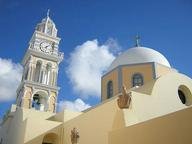
The Islands of Greece Trivia Quiz
I love the Greek islands: there are thousands of them, with about 200 being inhabited. Can you list the top ten largest islands in descending order of size, starting with the largest and going down to the tenth largest?
An ordering quiz
by Southendboy.
Estimated time: 3 mins.
- Home
- »
- Quizzes
- »
- Geography Trivia
- »
- Europe
- »
- Greece